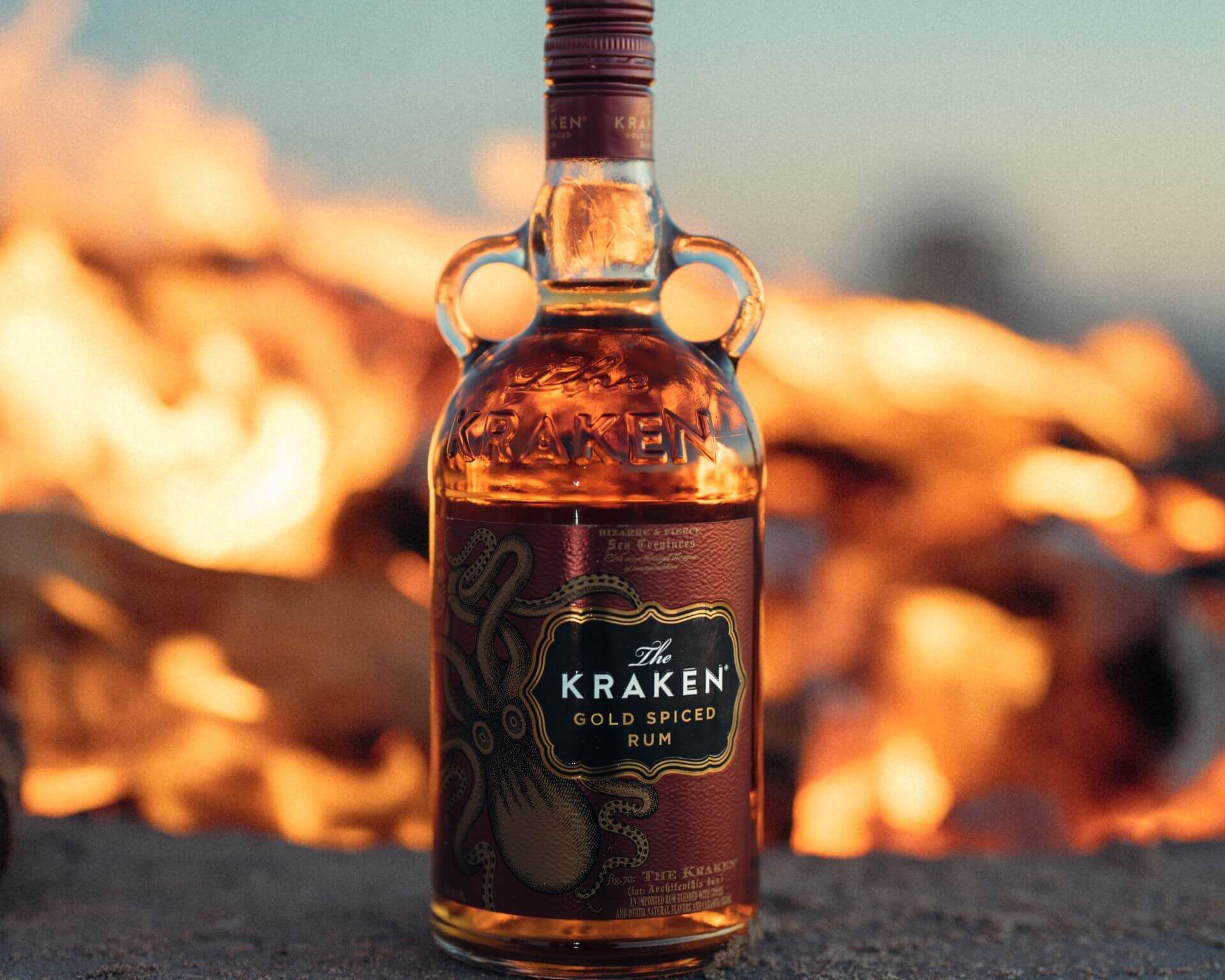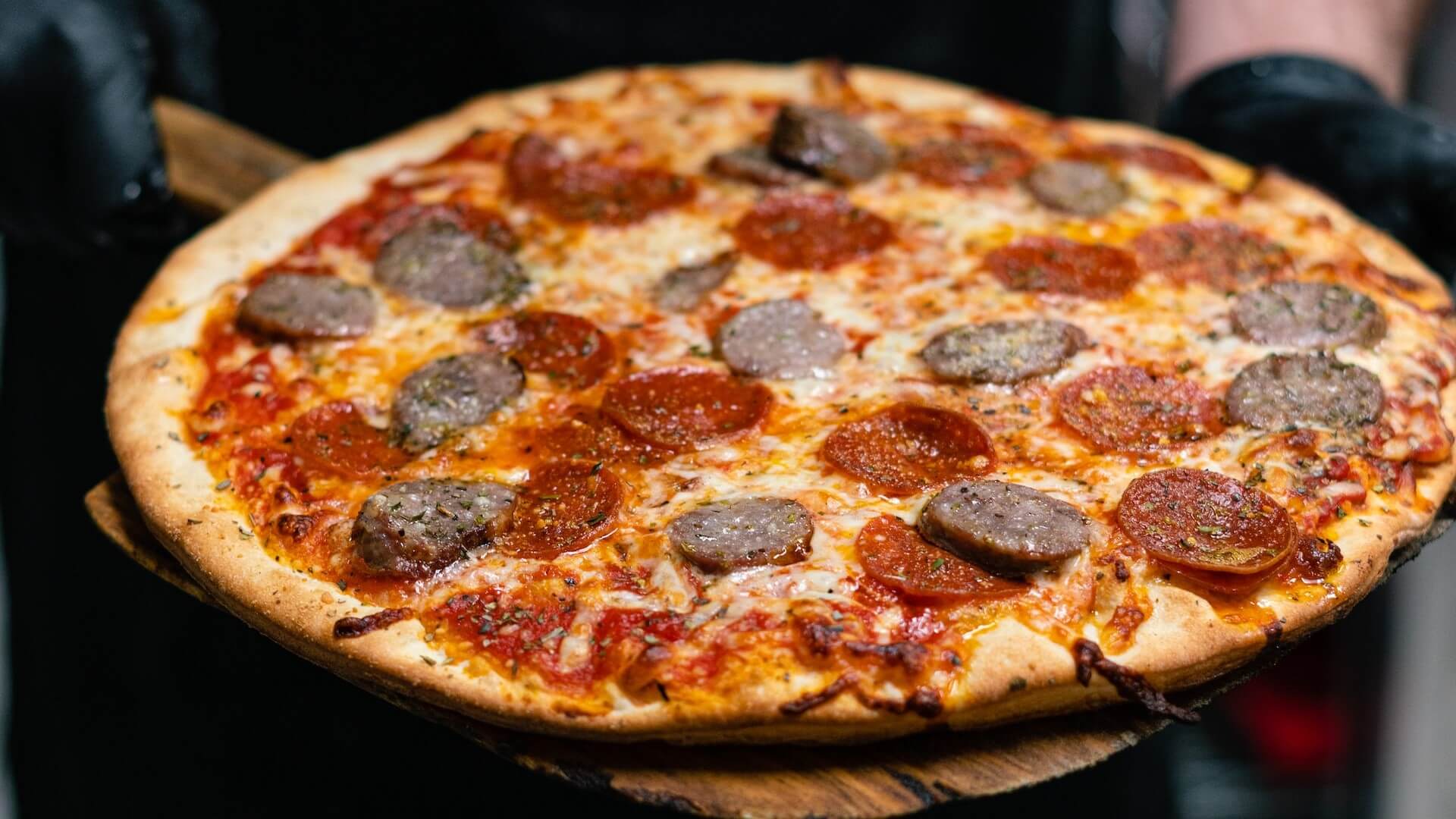The Kraken Unleashes a new Monster
by David Klemt

The Kraken, which claims to be the top-selling black spiced rum in the world, has released another monster: the Kraken Gold Spiced Rum.
This new release is a direct shot across the bow of the Captains, Sailors, and Admirals that have long commanded the spiced rum category. In other words, you know exactly which brands the Kraken is challenging with this expression.
Of course, this also gives you and your bar team a new spiced rum to introduce to guests. As it turns out, spiced rum is the most popular of the rum categories.
In June of 2020, Drizly launched BevAlc Insights by Drizly. The data-focused platform can provide operators with insights into consumer behavior and preferences. After all, if they’re ordering specific products for delivery to drink at home, they’ll expect the restaurants and bars they visit to have them on their menus.
Per BevAlc Insights, spiced rum boasted a 27-percent share in comparison to other styles in 2021. Interestingly, dark rum, according to BevAlc, held only a five-percent share. Those interested in this data can learn more reviewing BevAlc Insights’ 2021 Rum Forecast.
As far as what to expect on the nose and palate, tasting notes make mention of aromas of banana bread, caramel, vanilla, cinnamon, and oak. One reviewer on YouTube likens the nose to that of Bumbu Rum. Vanilla and oak carry through to the finish, with the top flavors being molasses, dark spice, and caramelized sugar.
The Kraken Rum Launches A New Gold Spiced Rum
The Top-Selling Rum Brand Unveils Its Latest Gold Treasure
Jersey City, NJ, March 7, 2023—Today, the world’s first and top-selling black spiced rum brand, The Kraken® Rum, emerges from its lair in the depths of the ocean to enter into the gold spiced rum category with a new release. A smooth and rich liquid, The Kraken Gold Spiced Rum is here to set THE NEW GOLD STANDARD in the rum category making waves for captains, sailors, and admirals alike.
The Kraken Gold Spiced Rum: The Product
Introducing THE NEW GOLD STANDARD for sipping: a gold spiced Caribbean rum, rich beyond words—and perhaps the only bit of lightness the legendary beast, known as “the Kraken,” loves with as much passion as its storied black ink. On the nose, The Kraken Gold Spiced Rum reveals a sweet brown medley of caramel, oak, and banana bread. Flavors of molasses and dark spice fade into caramelized sugar, with a slight finish of toasted oak and vanilla.
“As gold spiced rum occasions are now the highest among the rum category, we are proud to introduce this new offering from The Kraken, with a flavor profile all its own,” said Lander Otegui, Senior Vice President of Marketing at Proximo Spirits. “We are confident that this product will be THE NEW GOLD STANDARD in spiced rum thanks to its superb taste that we know matches what our consumers are looking for.”
A study conducted on the popularity of spiced rum brands showed The Kraken Gold Spiced Rum as a clear category favorite. Proximo Spirits commissioned a third-party double blind taste test study against category competitor, Captain Morgan®. The study revealed more than 70% of consumers prefer The Kraken Gold Spiced Rum over Captain Morgan Original Spiced Rum. Furthermore, participants also overwhelmingly indicated The Kraken Gold Spiced Rum both has “superior taste” and is “the smoothest.”1
- Aroma: Sweet brown medley of caramel, oak, and banana bread. Rich vanilla with light cinnamon backtone.
- Flavor: Molasses and dark spice fading into caramelized sugar. Slight finish of toasted oak and vanilla.
The Kraken Gold Spiced Rum is 35% ABV and sold nationwide at a $21.99 MSRP per 750ml. It is also available in 1L and 1.75L bottles.
“Take of Gold” New Campaign
To bring The Kraken Gold Spiced Rum from sip to screen, the brand is launching a new visual campaign, “Tale of Gold.” The advertisement, directed by Rich Lee who’s known for his work on the first three The Pirates of the Caribbean films, draws consumers into the dark world of the Kraken. Moody, foreboding visuals divulge the action-packed narrative of unworthy pirates who try to steal the precious treasure of gold from its lair and are thwarted by the Kraken.
The Kraken Golden Hour Sweepstakes
Before it dives back into the darkness, The Kraken is celebrating its newly released Gold Spiced Rum by giving consumers an opportunity to win a Golden Hour experience in the Dominican Republic.To enter The Kraken Golden Hour Sweepstakes for a chance to win a trip to the home of The Kraken Rum, scan the QR code or visit KrakenGoldenHour.com for more information.
No purchase necessary to enter or win. Purchasing a product will not improve your chances of winning. Must be documented resident of the U.S. or D.C., age 21 or older as of date of entry. Registration begins at 12:00am ET on February 1, 2023 and ends at 11:59pm ET on June 30, 2023. To enter, and for complete official rules including eligibility, prize description and approximate retail value, scan the QR code using your mobile device’s camera or directly visit www.krakengoldenhour.com. Winner selected in random drawing. Odds of winning are based on the total number of eligible entries received. No alcoholic beverage is part of any prize award. Void wherever prohibited or restricted by law. SPONSOR: Proximo Spirits, Inc., 3 Second Street, Suite 1101, Jersey City, NJ 07302.
To learn more about The Kraken Gold Spiced Rum and the rest of the Kraken’s keep, visit KrakenRum.com and follow The Kraken Rum on Instagram, Twitter, and Facebook.
1 Taste-tests were conducted in April 2022 by TasteMakers Research Group in a blind study.
About The Kraken® Rum
AS IT IS TOLD, The Kraken Rum is an imported rum from the Caribbean blended with secret spices. Named for the sea beast of myth and legend, The Kraken Rum is bold, rich, and smooth. The Kraken Rum portfolio includes The Kraken Black Spiced Rum, made from unique Caribbean black spiced rum with a lingering spicy finish, The Kraken Gold Spiced Rum with a toasted oak and vanilla finish that’s smooth and tasteful, and ready-to-drink The Kraken Rum canned cocktails in flavors: Rum Punch, Cola and Ginger Beer. AS THEY SAY, “To not respect the power of the Kraken is to not respect the sea.” So, drink with respect.
The Kraken® Gold Spiced Rum. Rum with Natural Flavors and Caramel Color. 35% Alc./Vol. (70 proof). ©2023 Kraken Rum Co., Jersey City, NJ, Like the deepest sea, The Kraken® should be treated with great respect and responsibility.
Captain Morgan® is a registered trademark of Diageo North America, Inc. and referred to for product identification. Pirates of the Caribbean® is a registered trademark of Disney Enterprises, Inc. and referred to for Rich Lee’s background experience with the film franchise.
Disclaimer: Neither the author nor KRG Hospitality received compensation, monetary or otherwise, from the Kraken Rum, Proximo Spirits, or any other entity in exchange for this post.
Image: The Kraken Rum












